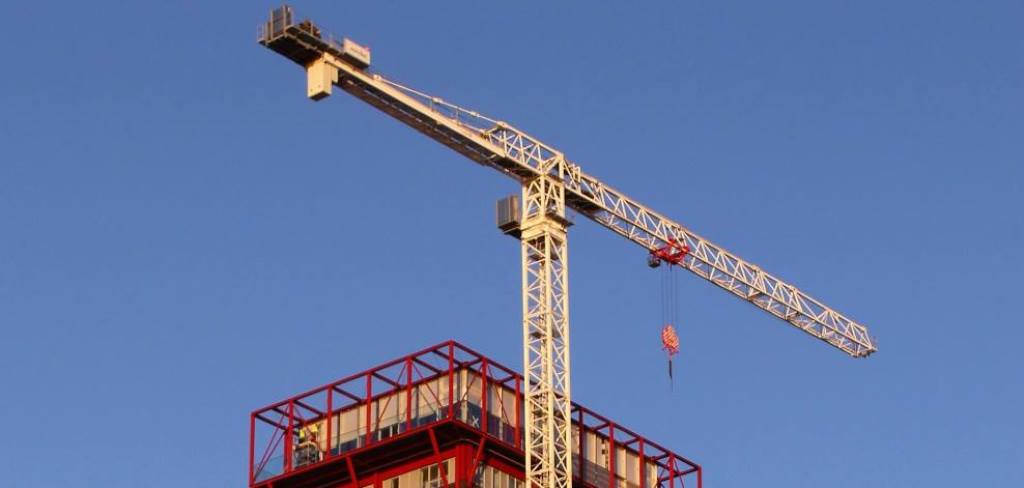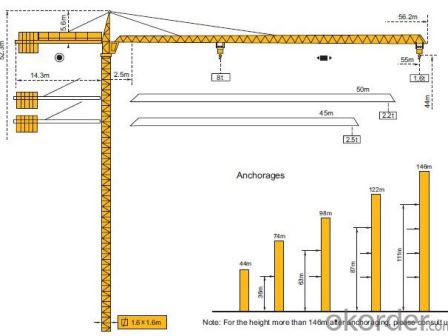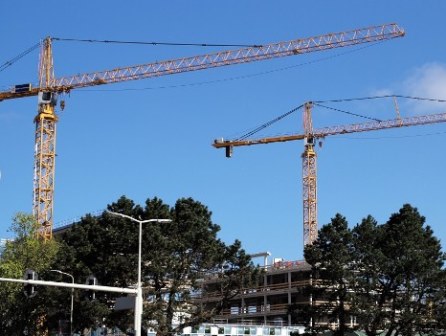The “tip load” of a tower crane refers to the maximum load that can be safely lifted at the maximum radius (distance from the crane’s center of rotation to the load) that the crane can reach.
This value is crucial for crane operators and site planners as it directly influences the crane’s lifting capacity and the safety of operations.
Understanding the tip load is essential for proper planning and safe operation on construction sites, ensuring that the crane can handle the required loads without risking collapse or tipping.

Key points about tip load
Maximum Load at Maximum Radius: The tip load is the heaviest weight that can be lifted when the crane’s jib (horizontal arm) is fully extended.
Crane Stability: The tip load is influenced by the stability of the crane. The further out the load is from the center of rotation, the more leverage it exerts, potentially making the crane unstable.
Safety Limits: Crane manufacturers provide detailed load charts that specify the maximum loads for various radii. These charts must be adhered to in order to ensure safe operation.
Counterweights and Structural Limits: The tip load is also a function of the counterweights used on the crane and the structural limits of the crane itself. The crane’s design, including its foundation, counterweights, and the strength of its components, all play a role in determining the tip load.
What is the tip load of a tower crane?
The tip load of a tower crane varies depending on the specific model and manufacturer of the crane. Each crane has its own load chart, which outlines the maximum loads that can be safely lifted at different radii.
To give you a concrete example, let’s look at a typical tower crane load chart and its tip load.
For instance, consider the Potain MDT 178 tower crane, a popular model in the construction industry. Here’s a simplified example of what its load chart might look like:
- At 10 meters radius: Maximum load = 12,000 kg
- At 20 meters radius: Maximum load = 6,000 kg
- At 30 meters radius: Maximum load = 3,000 kg
- At 60 meters radius (maximum radius): Tip load = 1,200 kg
In this example, the tip load of the Potain MDT 178 at its maximum radius of 60 meters is 1,200 kg. This means that when the crane’s jib is fully extended to 60 meters, the maximum load it can lift without compromising safety is 1,200 kg.
It’s important to consult the specific load chart for the model of crane you are using, as these values can differ significantly between different cranes and manufacturers.
The load chart takes into account factors such as crane configuration, counterweights, and other operational conditions to ensure safe lifting operations.

Tower Crane Load chart
The lifting capacity of the crane depends on several factors. The limitation for lifting weight begins at the base of the tower crane. Each and every component of the crane affects the lifting capacity of the load.

Tower Cranes
Types of Tower Cranes and specifications
